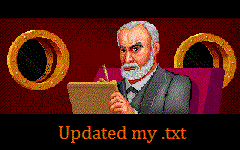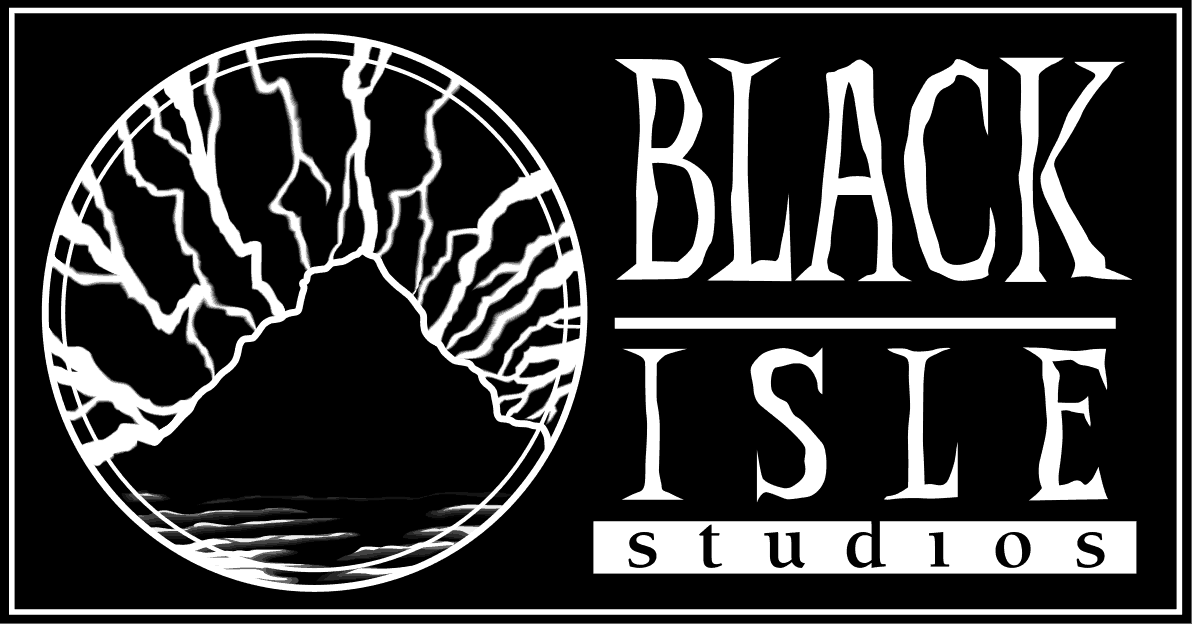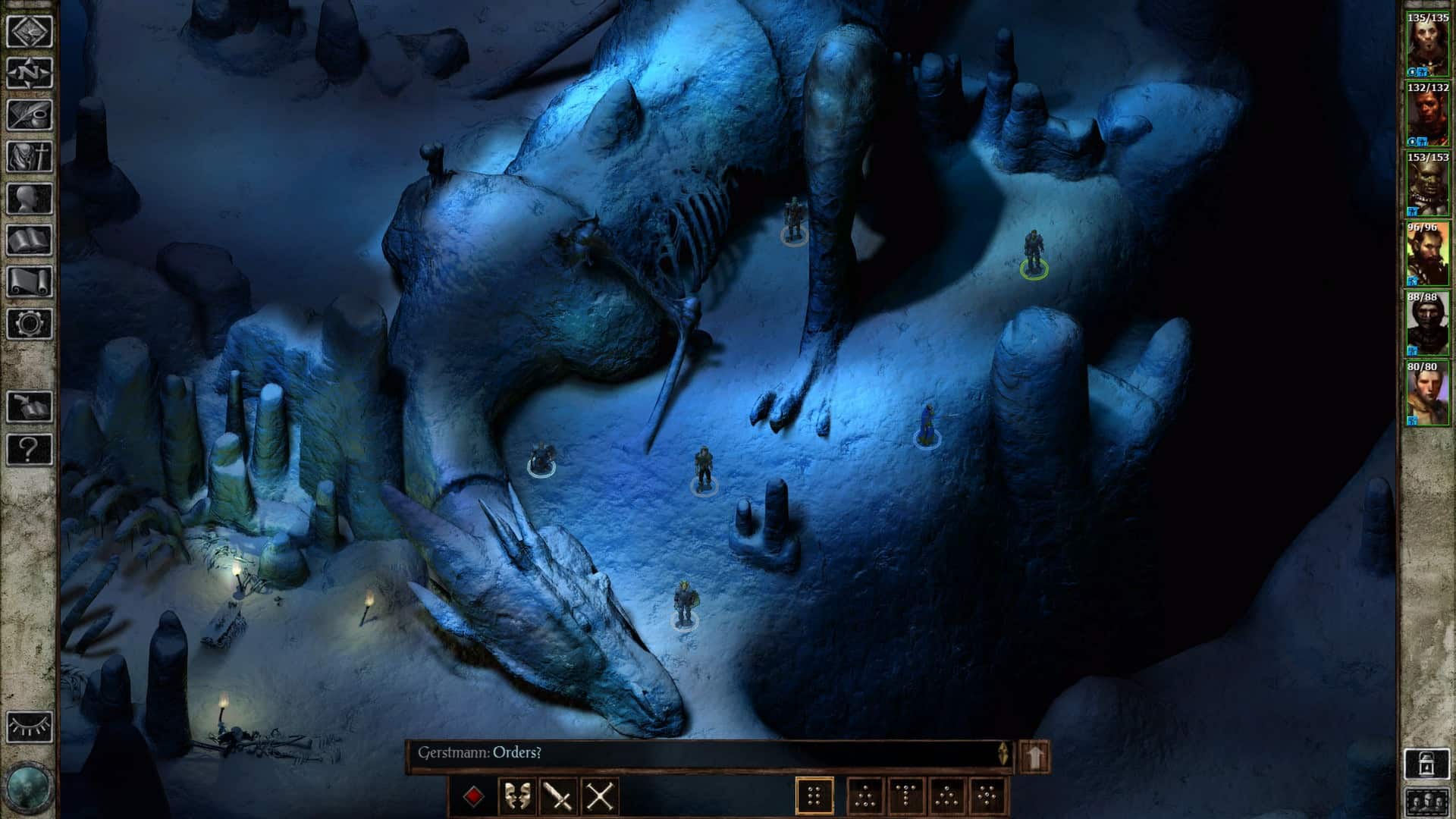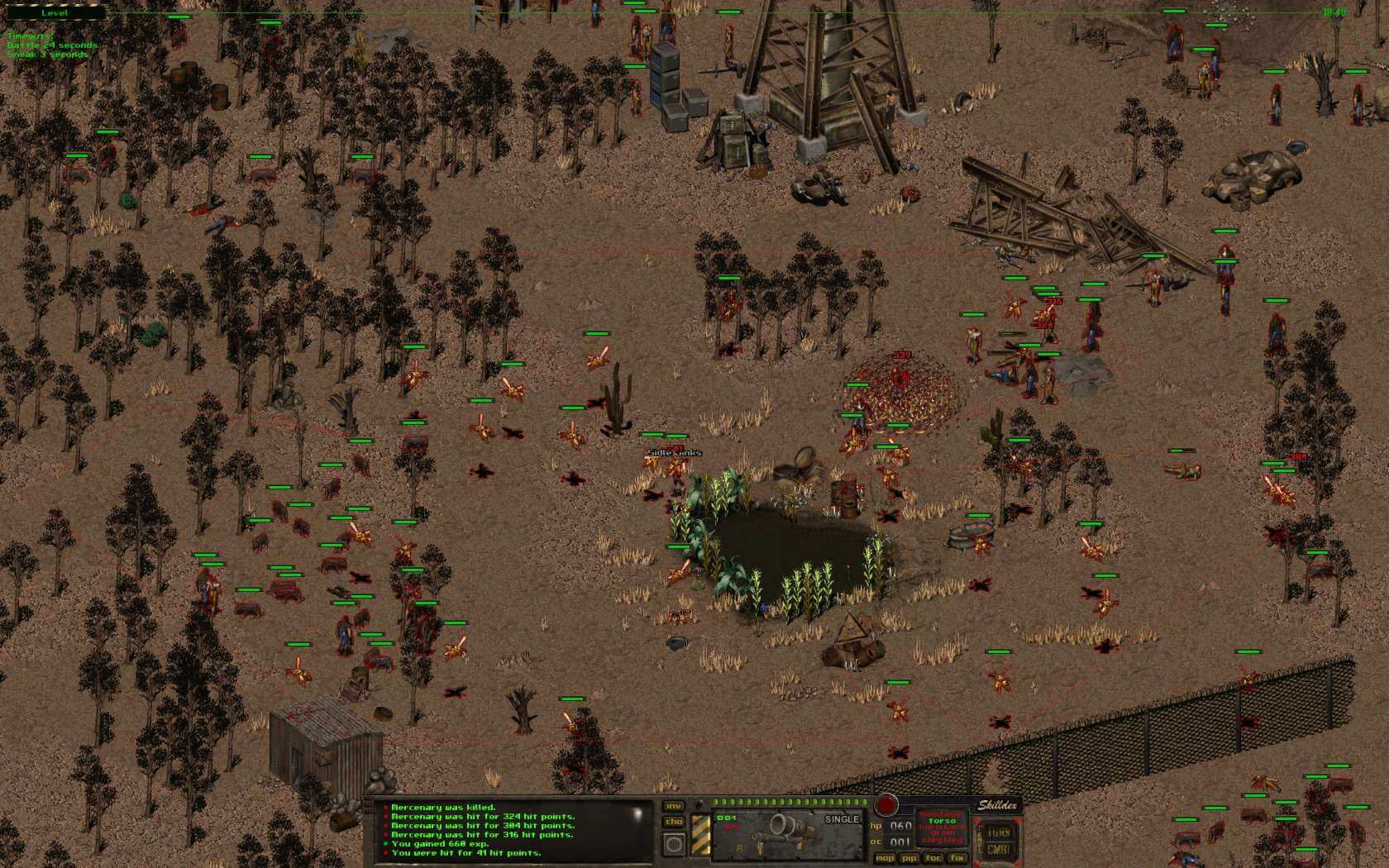It’s a relatively warm autumn night of 4th October 2017 A.D. here in Berlin and I am standing outside on the street in front of a local wine bar impatiently awaiting the arrival of one of my favorite game masters of the cRPG scene,
Obsidian’s one and only Joshua Sawyer. Upon his arrival we sit down at a table in the intimate environment of a wine cellar and whilst he enjoys his glass of red, we are quick to find a common ground in history. He is very passionate and knowledgeable about the subject of medieval history and is also fluent in German. But before I hit the record button of my voice recorder and for the first time, so that conversation can switch to the games, we transit into a slightly more affordable establishment (due my typical lack of dineros) just down the street. During the short walk, we talk more on a subject of local history and I am learning about the forceful Germanization of Jewish names in the late 18th. Finally, at our destination we find a quieter compartment at the rear end of the bar and with a mixture of excitement and nervousness, my index finger slowly proceeds to that magical red button…
Hi Josh, do you still remember your very first Fallout experience?
I was a junior in college when it came out and I played it and fell in love with it immediately. After finishing I went online and read about the endings. Someone was talking about the evil ending, which I did not know existed. So I went back, reloaded my save game, and killed everyone I could find to get negative karma, so that I could get the evil ending. And then I started the game again—I think I played it throughout like three times that week.
How did you manage to join the ranks of Interplay & Black Isle?
So I was graduating college with a degree in history and a minor in theater. I had a very low grade point average—I was a bad student. I had no idea what I was going to do with those degrees. At the time, I was actually expecting to become an apprentice for a tattoo parlor. Then a friend of mine told me that a studio in California, Black Isle, was hiring a web designer for a new
D&D game they were making. I had taught myself web design—it was the mid-’90s, so I taught myself HTML, Photoshop and Flash. At that time there were only a few people who knew Flash. So I applied for a job at Black Isle Studios for a project that they hadn’t announced what it was. I was one of three people out of 60 something who were considered. I was actually the second choice—the first choice wanted to be with his girlfriend, so he ended up taking a job in Seattle [
laughing].
But then someone from the Icewind Dale team left and there was an opening
So that’s how I got into Interplay. I started to work as a web designer for
Planescape: Torment—that was my first project. And from there, I worked on the
Icewind Dale website, redesigned the
Baldur’s Gate 2 and eventually the
Neverwinter Nights 2 websites. But at the same time, I was talking a lot with Feargus Urquhart [ex-boss of Black Isle, current CEO of Obsidian], Chris Avellone, Colin McComb, Tim Donely and others who worked on
Planescape, trying to convince them to let me do the game design.
Had a vacancy opened for that position?
There wasn’t a position at first. I think it was Colin McComb—who used to work for TSR’s
D&D stuff—who recognized that I knew
D&D very thoroughly. But then someone from the
Icewind Dale team left and there was an opening, so Feargus let me come over part-time. I was originally working half-time on websites and half-time on
Icewind Dale and eventually I moved onto full-time development.
What was the transition to full-time game designer like?
I think it was me telling Chris Parker [former chief producer at Interplay, now works at Obsidian] that I couldn’t do it anymore [
laughing]. I was like, “Hey man, I’ve got a lot of areas to design. There are other people who can do the web work, I am not that important to it.” I had already redesigned the
Icewind Dale and
Baldurs Gate 1 and
2 websites. I said, “I think this is more important.” Because web was part of marketing, I was getting dragged into marketing meetings. I was in this conflict like, “aahh, it is lot of my time,” so eventually, they agreed and I shifted over. I still helped them partially with the web design, but I was now a full-time game designer.
Black Isle Studios logo
You are known to be a passionate lover and expert of D&D. Was that the driving force behind your game design ambition?
Yeah. I thought, maybe, if I was going to get into games, it would be tabletop games. I figured I would want to be designing tabletop role play games, cause I already did this in a college—just my own games for myself and my friends. I didn’t really have any idea how to get into video games, so it was really just luck—all of this is just luck.
I started with the basic level, followed by expert
D&D and then
AD&D. And
AD&D was about the time when I met this older kid in my local library, Tony Uñate. He was playing
The Bard’s Tale—the first one—and that was my first exposure to computer RPGs. That just blew me away. It was on a
C64.
And do you remember when that was?
That was 1985. That was the year it came out, so yeah, I was just blown away by that. I got really into that and
Ultima III was around at the same time I think. And
Wizardry. My friend Ryan had that,
Might and Magic and bunch of other games. So after that, I’ve just continuously played computer and tabletop RPGs.
Fallout was originally called something like Vault 13. I don’t what the reason was, but Brian Fargo said, “Call it Fallout!”
Did you play the original Wasteland?
Actually, I did not play
Wasteland. I played
The Bard’s Tale and I think
Dragon Wars, and a bunch of other Interplay games, but not
Wasteland at that time.
Could you tell me about your very first meeting with Brian Fargo?
My first meeting with him was at Interplay, but I don’t remember the context of the meeting and I am sure he does not remember it at all, because at the time, I was just a junior designer. But actually, I remember the first email contact I had with him, which was great! Actually, there were two things that were really fantastic. He sent Feargus an email about how much he loved
Icewind Dale, and I was like ‘wow, that is pretty awesome.’ As someone who grew up loving
The Bard’s Tale, that was incredible.
And then there was another time when we had to come up with the names for the expansion of
Icewind Dale and there was a big list. One of them was
The Tales of the Frozen North—and, you know, I bet marketing was going to pick up that one, because it sounded like
Tales of the Sword Coast [
Baldur’s Gate expansion]. But I had one hit on the list that was called
Heart of Winter and there were around eight others, and I was like, ‘that is the one they should pick!’
So I sent this email to Interplay’s marketing team, including Brian Fargo. I didn’t say to them what my preferences were; I just presented them with the team’s ideas for the names of the expansion. And before anyone else could respond, Brian Fargo responded, “
Heart of Winter!” [
laughing]. I was like, ‘great, awesome, I guess it really does not matter what everyone else said, because he just picked it.’
There is a funny story which Tim tells too, Tim Cain, which is that
Fallout was originally called something like
Vault 13. I don’t what the reason was, but Brian Fargo said, “
Call it Fallout!” Tim, to his credit, says that at the time he hated the name and lot of people thought it was a really stupid name, but apparently everyone thought that it’s cool in the end, so it didn’t matter.
we also balanced the combat a little more aggressively, because we can predict what kind of level you are going to be pretty easily based upon the amount of combat in the game
Let’s return to Icewind Dale for a moment. Why was your approach so radically different to Baldur’s Gate?
We knew that making a
Baldur’s Gate-sized game would be very difficult with the team we had.
BG is huge—very long with a ton of maps. We did not have that many artists and designers to work on it. So Chris Parker—who was our producer at the time and now one of the co-owners of Obsidian—he said, “Okay, let’s focus this as a linear dungeon crawler. Instead of having a huge world to explore and lots and lots of quests, we’ll have a straight, linear, combat-oriented game.”
So we really focused on making lots of cool dungeon environments rather than city environments that we knew would take a lot of time and effort. There was also the fact that we did not use companions, which again would have been a huge amount of work. We said, “let’s just let players make their whole party,” which is something many people did in
Baldur’s Gate anyway. So you just make your whole party, and make lots of voice acting and portraits for people, so that they have a huge number of things to pick from. And yeah that was really our focus.
Icewind Dale: Enhanced Edition (2014)
So what was the main difference in Icewind Dale‘s combat mechanics?
In comparison with
Baldur’s Gate 1, I think that we had more of an emphasis on tactical combat encounters that used the whole party, because we assumed that from the beginning you would have a full party of adventurers and you could cover all the bases. Because the game was linear, we also balanced the combat a little more aggressively, because we can predict what kind of level you are going to be pretty easily based upon the amount of combat in the game. And because the level cap bumped up from BG1, we also extended also the types of magic items we had—the range of spells and stuff like that.
I am a great fan of tactical elements, especially presented via a turn-based system in similar games. For example, in Divinity: Original Sin, I appreciate the creative ways the player can solve fights even with a much stronger enemy—the optimal utilization of environmental mechanics and the combination of elements, for instance. What was your philosophy for designing combat scenarios?
I think the difference with
Icewind Dale was that, basically, the environment played a very little role. The layout of the environment was important, but we didn’t have dynamic elements like
Divinity has. In
Divinity also, they use keywording heavily in their effects, so fire and electricity and stuff like that are extremely common. Whereas with
Icewind Dale, we were really trying to recreate as many existing
D&D spells and abilities as possible, so mostly focusing on implementing what was in the rule books and less on creating our own little tactical system.
with Icewind Dale and Baldur’s Gate, what we found is that despite the fact that lots of people requested multiplayer, ..we didn’t see that many people playing it in the end
This firm anchoring in D&D rule books has also accompanied all of the other projects powered by Infinity and Aurora engines. Thus, I assume that you have never considered walking a different path.
No not really, even with
Pillars of Eternity, we haven’t really tried to go too far away. There is still a Magic Missile spell at first level, there is still a Fireball at third level, there is still a Cone of Cold spell at fifth level for wizards. There are certain things that, especially on something like
Pillars, we kept there pretty much entirely for the sake of nostalgia—for the feeling, ‘oh this feels comfortable, oh there is the spell I kind of expected to be there.’
What about multiplayer back then? D&D and other pen-and-paper RPGs are by nature multiplayer games. This philosophy is well-represented today by the Divinity: Original Sinseries. Baldur’s Gate and Neverwinter Nights also had multiplayer, but the upcoming titles completely lost it eventually. What were the main troubles?
Well, with
Icewind Dale and
Baldur’s Gate, what we found is that despite the fact that lots of people requested multiplayer, we didn’t see very high numbers in terms of the
GameSpy stats and stuff like that. We didn’t see that many people playing it in the end—it was huge effort to put it in and not many people actually played it that much. It’s kind of like when you ask someone if they’d like a dessert; they’d be like, ‘Yeah, sure’ [laughing]. That’s as in, ‘Do you like this game?’ ‘Yeah!’ ‘Do you want multiplayer?’ ‘Yeah, sure, of course.’ It does not really matter if they’re going to play it or not; they’ll probably say, ‘I would not mind that.’
I think—no, I know—that some games have to be fundamentally designed for the multiplayer or they will have a lot of problems. With
Neverwinter 1, I’ve heard a lot of people slam
Neverwinter 1‘s official campaign,
OC. I mean, there are problems with it, but it was designed to be multiplayer-friendly. A lot of the stuff Bioware put out for
Neverwinter is multiplayer-friendly—it was designed around that.
Neverwinter 2, by comparison, was awful for multiplayer. It was not designed for multiplayer at all.
I still remember how disappointed I was when I was playing the co-op campaign of Neverwinter 2 with a friend and it had no dialogue options—like you get with Divinity, for instance.
A lot of the decisions on how the campaign was structured were made before I got there, but it was really, fundamentally designed to be played as a single-player experience. I think it was actually an over-correction. Don’t get me wrong, there are cool things in
Neverwinter 2‘s official campaign, but the cost of that is that the people who came to
Neverwinter 2 expecting it to be multiplayer-friendly like
Neverwinter 1 [laughing], were pretty upset, like ‘what the heck?’ And that extends to other aspects of the game too. Bioware, when they made
Neverwinter 1, authored the tiles very memory-efficiently. So, if you connected to a server that you had never been to before, that had a completely brand-new module, it took very little time to download.
there were some people who took bunch of the art assets from Fallout and they made an MMO out of it. It was a free-for-all Ulitma Online style, where you can just mass-murder everybody
Since we are talking about multiplayer, where do you stand with the MMORPG genre?
I have played a few of them and I understand why a lot of people like them, but they don’t appeal to me very much. I like the exploration aspect of them, but I don’t really like grinding and I am not that social a gamer, so organizing with guilds and stuff like that was never really my thing. I played
World of Warcraft for about five months and I got to the Arathi Highlands. At that time, the content there was really frustrating and I wasn’t having fun, so I was like, ‘nah, I am not playing this any more’ [
laughing].
I have always been a bit of MMORPG enthusiast and a fan of sandbox titles such as Ultima Online. I always thought that they were going to be the future of the genre. That’s why I have spent most of my time playing EVE Online, because it emphasizes free roaming and emergent gameplay. Unfortunately, I feel that it is World of Warcraft which effectively halted and rolled over this initial promise.
Have you seen the insane
Fallout: Online (FOnline:Reloaded)?
FOnline:Reloaded
I don’t think so.
So I think it was a Czech group that made
Fallout [1.5:]Resurrection. Don’t quote me [
laughing], because
RPG Codex is going to get really mad if I got that wrong. But that was an unofficial
Fallout spinoff, actually just couple of years ago. I think it was called
Fallout Resurrection and it was made using the
Fallout 2 engine.
Wow, I didn’t know that. Did you say Czechs made it?
I think so. But even before that, maybe four to five, maybe six, years ago, there were some people who took bunch of the art assets from
Fallout and they made an MMO out of it. It was a free-for-all
Ulitma Online style, where you can just mass-murder everybody [laughing]. People made little bases and they would raid each other’s bases. Yeah, that was incredible.
So Fallout Online and Fallout Resurrection…
So yeah,
Fallout Online—and by the way, this was totally unofficial—was just some fans making stuff and
Fallout [1.5:]Resurrection was a very aggressive mod group. I downloaded it, but I have not played it yet [
laughing]. So that’s what I have always thought: if there was ever going to be a
Fallout MMO, it would be something like that fan-made
Fallout Online; where it’s just super-cutthroat like
Ultima Online; where it’s everyone for themselves!
Do you think there will be an official Fallout Online one day?
If Bethesda wants to do it. I am sure they could; they have enough money [laughing].
Joshua Eric Sawyer
Born: 18.10.1975
Nationality: American
Role: Game Designer
Studio: Obsidian
Previously: Black Isle Studios
Known For: Icewind Dale, Neverwinter Nights 2, Fallout: New Vegas, Pillars of Eternity, Deadfire






























![The Year of Incline [2014] Codex 2014](/forums/smiles/campaign_tags/campaign_incline2014.png)















